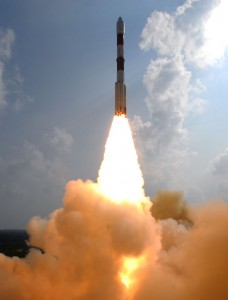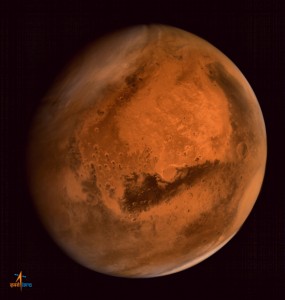Written by Alisha Klug, Media by Jack Wang
[divide]
On Wednesday, Sept. 24, everyone in the Indian Space Research Organization (ISRO) applauded as their spaceship, Orbiter (its Indian name is Mangalyaan) made it to Mars. Until this moment, only the United States, Europe, and Russia had been able to send a spacecraft all the way to Mars. Furthermore, India became the first country to get a spacecraft to Mars in the first try.

It is noteworthy that it took India far less money to get Orbiter to Mars than it took other countries to get their spacecraft to Mars. $74 million may seem like a lot, but compared to the $671 million NASA used to get MAVEN to Mars, it’s a pretty small amount. Indian astronomers and engineers are calling this feat an incredible accomplishment. Despite this, some are saying that the mission was a bad use of money that could have been used on other, and more important projects.
The Mars Orbiter shares the planet with two of NASA’s rovers and a European orbiter. Also, NASA’s MAVEN orbiters have been there since Sunday, Sept. 20. People from the different programs congratulated ISRO via Twitter when it arrived at Mars. NASA tweeted “We congratulate @ISRO For it’s Mars Arrival! @MarsOrbiter joins the missions studying the Red Planet.” Curiosity, the Mars Rover also tweeted about Mars Orbiter’s arrival: “Namaste, @MarsOrbiter! Congratulations to ISRO and India’s first interplanetary mission upon achieving Mars orbit.”
The orbiter is a 1,337 kg (or about 2,950 lb) satellite. It is very small for a satellite – only about the size of a small car. It carries a sensor that measures the amount of methane in the atmosphere of Mars, a color camera, and a thermal infrared camera that will measure the temperature of the surface. Despite the almost complete lack of life there today, scientists have found evidence that there could have been life on Mars before. Because Methane gas is a hydrocarbon, ISRO is looking for it to try to gain insight in the history of life on Mars.

[clear]
According to the ISRO website, the main objectives for the Orbiter mission are “to develop the technologies required for design, planning, management, and operations of an interplanetary mission.” Some say that this shows that India plans on sending more spacecrafts to different planets in the future.































